
The Feast of Corpus Christi, also known as the Solemnity of the Most Holy Body and Blood of Christ, is a Christian liturgical solemnity celebrating the Real Presence of the Body and Blood, Soul and Divinity of Jesus in the elements of the Eucharist; it is observed by the Latin Church, in addition to certain Western Orthodox, Lutheran, and Anglican churches. Two months earlier, the institution of the Eucharist at the Last Supper is observed on Maundy Thursday in a sombre atmosphere leading to Good Friday. The liturgy on that day also commemorates Christ's washing of the disciples' feet, the institution of the priesthood, and the agony in the Garden of Gethsemane.

Lluís Domènech i Montaner was a Catalan architect who was very much involved in and influential for the Catalan Modernisme català, the Art Nouveau/Jugendstil movement. He was also a Catalan politician.
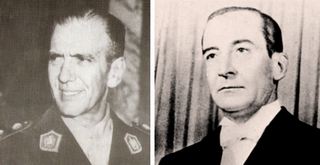
Revolución Libertadora was the coup d'état that ended the second presidential term of Juan Perón in Argentina, on 16 September 1955.
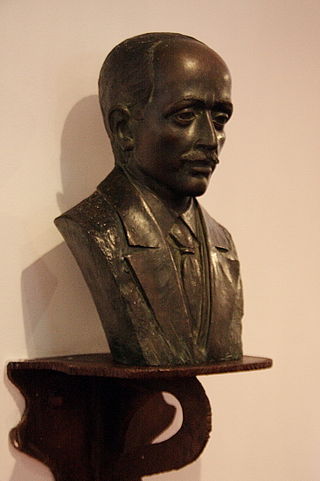
José María Jujol Gibert was a Catalan Spanish architect. Jujol's wide field of activity ranged from furniture designs and painting, to architecture. He worked with Antoni Gaudí on many of his most famous works. Among Jujol's projects are Casa Batlló, Casa Milà, Park Güell, and Our Lady of Montserrat, and among his design styles are Modernisme and Art Nouveau.

Ramon Casas i Carbó was a Spanish artist. Living through a turbulent time in the history of his native Barcelona, he was known as a portraitist, sketching and painting the intellectual, economic, and political elite of Barcelona, Paris, Madrid, and beyond. He was also known for his paintings of crowd scenes ranging from the audience at a bullfight to the assembly for an execution to rioters in the Barcelona streets. Also a graphic designer, his posters and postcards helped to define the Catalan art movement known as modernisme.

The Museu Nacional d'Art de Catalunya, abbreviated as MNAC, is a museum of Catalan visual art located in Barcelona, Catalonia, Spain. Situated on Montjuïc hill at the end of Avinguda de la Reina Maria Cristina, near Pl Espanya, the museum is especially notable for its outstanding collection of romanesque church paintings, and for Catalan art and design from the late 19th and early 20th centuries, including modernisme and noucentisme. The museum is housed in the Palau Nacional, a huge, Italian-style building dating to 1929. The Palau Nacional, which has housed the Museu d'Art de Catalunya since 1934, was declared a national museum in 1990 under the Museums Law passed by the Catalan Government. That same year, a thorough renovation process was launched to refurbish the site, based on plans drawn up by the architects Gae Aulenti and Enric Steegmann, who were later joined in the undertaking by Josep Benedito. The Oval Hall was reopened in 1992 on the occasion of the Olympic Games, and the various collections were installed and opened over the period from 1995 to 2004. The Museu Nacional d'Art de Catalunya was officially inaugurated on 16 December 2004. It is one of the largest museums in Spain.
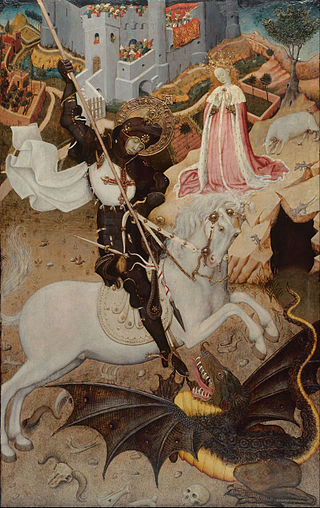
Bernat Martorell was the leading painter of Barcelona, in modern-day Spain. He is considered to be the most important artist of the International Gothic style in Catalonia. Martorell painted retable panels and manuscript illuminations, and carved sculptures and also provided designs for embroideries.

Santa Maria del Mar is a church in the Ribera district of Barcelona, Catalonia, Spain, built between 1329 and 1383 at the height of Principality of Catalonia's maritime and mercantile preeminence. It is an outstanding example of Catalan Gothic, with a purity and unity of style that is very unusual in large medieval buildings.
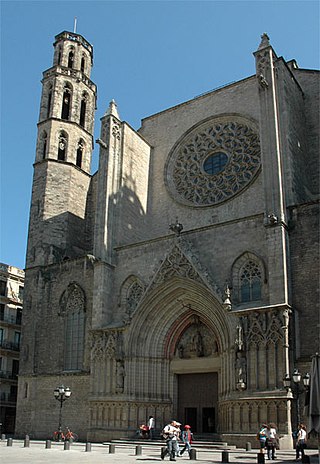
Berenguer de Montagut was a Catalan architect, master builder on Santa Maria del Mar.

Gabriel Móger or Mòger was a Majorcan painter, sculptor, and poet. He was employed primarily for work on retables and altarpieces by the churches of Majorca. Though Móger's active painting career can be dated to 1426–1438 on the basis of surviving documents, his poetic encounter took place some years earlier. A document of 8 March 1404 calls him minor xxv annis et maior tamen xx. By 2 January 1414 he was married and the poem was most likely composed between those dates.

The ball de diables is a dance tradition originating from Catalonia, though it is also observed in the Valencian Community and the Balearic Islands. Over the course of centuries, the balls de diables have evolved into the modern day correfocs. Participation in the form of passacaglia (processions) and correfocs is an essential part of celebrations in many towns and cities.

The Collegiate Basilica of Santa Maria, also known as La Seu, is a Romanesque-Gothic church in Manresa, Catalonia, north of Spain.

Montisi is an Italian village in the municipality of Montalcino, Province of Siena, Tuscany. It sits on a hill on the boundary between the Val d'Orcia and the Crete Senesi.
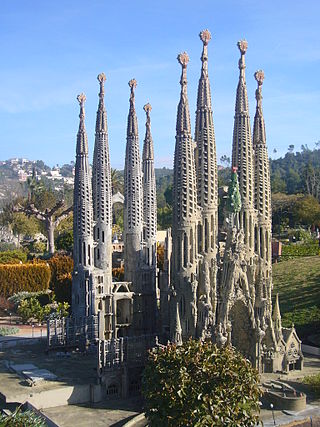
Catalunya en Miniatura is miniature park inaugurated in 1983 in Torrelles de Llobregat, 17 km from Barcelona. The park is 60,000 square meters, 35,000 of them devoted to the scale models, it is one of the largest miniature parks in the world, and the largest of the 14 miniature building exhibitions present in Europe. It displays 147 models of palaces, churches, bridges and other buildings from Catalonia and Mallorca and it includes all the major works by the renowned architect Antoni Gaudí.

The Maricel Museum is a museum located in the centre of Sitges; reopened after a major refurbishment in 2015.
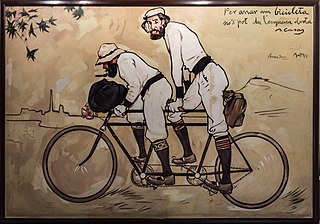
Ramon Casas and Pere Romeu on a Tandem is a painting by Ramon Casas in exhibition at the National Art Museum of Catalonia in Barcelona.
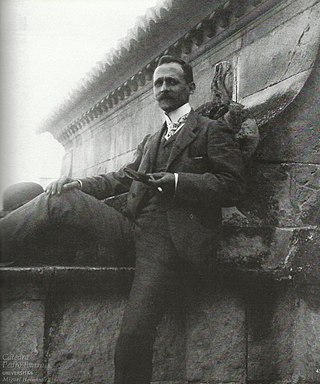
Marcel·lià Coquillat i Llofriu was a Spanish architect of the Modernisme and Noucentisme movements.

The 1896 Barcelona Corpus Christi procession bombing was an attack carried out on the Feast of Corpus Christi procession in Barcelona on June 7, 1896. The identity of the perpetrators is disputed: the attack was attributed to anarchists but this was a result of forced confessions through torture.
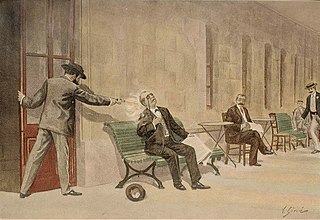
Italian anarchist Michele Angiolillo assassinated Spanish Prime Minister Antonio Cánovas del Castillo on 8 August 1897, in Gipuzkoa. The head of government had been vacationing in the Santa Águeda spa. The assassin was immediately arrested, tried, and executed. He justified the murder as revenge for torture during the Montjuic trial.
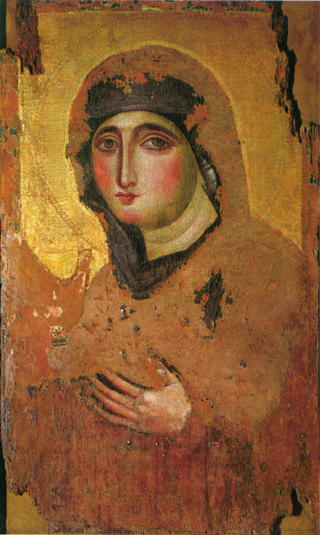
The Madonna del Rosario is an icon of Mary commonly dated to the sixth century or earlier. It is an early version of a type of icon known as the Agiosoritissa or the Maria Advocata, in which Mary is depicted without the Christ Child, with both hands raised. The work, which has been kept in the Church of the Madonna del Rosario since 1931, is thought to be the oldest image of Mary in Rome, Italy. Medieval tradition held that the icon was painted by Luke the Evangelist.





















